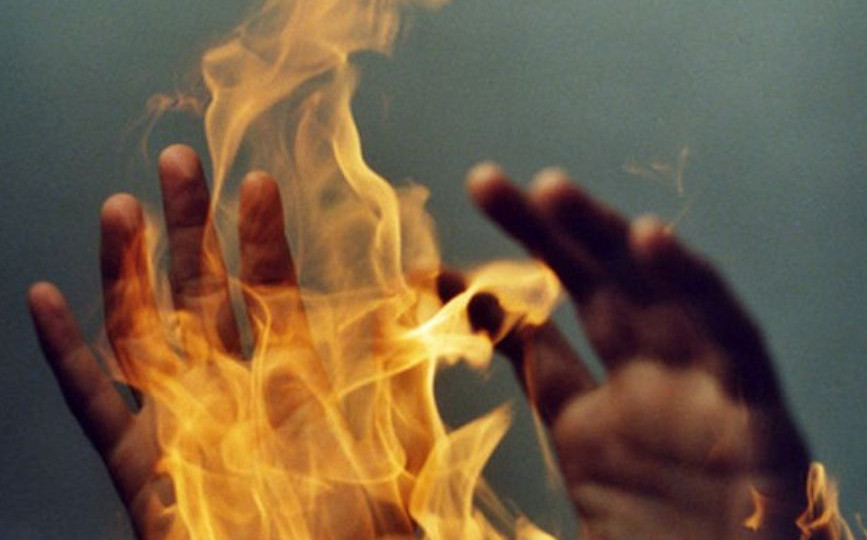 In particular, the method of committing the crime (deliberate arson of the victim), the means of its commission, and the relationship between the accused and the victim can testify to the presence of intent to commit intentional murder with particular cruelty. At the same time, the attempt of the guilty person to put out the flames on the victim's body does not exclude the intention of intentional murder with particular cruelty. This conclusion was reached by the Supreme Court by the panel of judges of the Third Judicial Chamber of the Criminal Court of Cassation, after considering in an open court session the cassation appeal of the defender in the interests of the convicted person against the verdict of the Sosniv District Court of Cherkasy and the decision of the Cherkasy Court of Appeal in case No. 703/1992/17 .
In particular, the method of committing the crime (deliberate arson of the victim), the means of its commission, and the relationship between the accused and the victim can testify to the presence of intent to commit intentional murder with particular cruelty. At the same time, the attempt of the guilty person to put out the flames on the victim's body does not exclude the intention of intentional murder with particular cruelty. This conclusion was reached by the Supreme Court by the panel of judges of the Third Judicial Chamber of the Criminal Court of Cassation, after considering in an open court session the cassation appeal of the defender in the interests of the convicted person against the verdict of the Sosniv District Court of Cherkasy and the decision of the Cherkasy Court of Appeal in case No. 703/1992/17 . The circumstances of the case
The accused, while in the house at his place of residence, during a quarrel with his roommate, which arose out of jealousy, poured gasoline on her and set her on fire. As a result, the woman received physical injuries in the form of burns covering 80% of the body surface, which was complicated by burn shock. According to the conclusion of the forensic medical examination, the injuries inflicted on the victim are life-threatening and are the cause of her death.
According to the verdict of the Cherkasy Sosnivskyi District Court, the accused was found guilty of committing the crime provided for in Clause 4, Part 2 of Article 115 of the Criminal Code (Intentional murder), and he was sentenced to 14 years in prison. The appellate court left this decision unchanged.
In the cassation appeal, the defender asked to change the verdict of the local court. According to him, the intent to intentionally kill the victim has not been proven, the subsequent behavior of the convicted person testified that the accused did not intend to kill the victim, since nothing prevented him from killing her, but on the contrary, he put out the fire on her, as a result of which he also received burns on his hands. In this regard, the defense attorney believed that the actions of the convicted person lacked intent to commit murder, the purpose and motive of this crime. He noted that the fire occurred as a result of his careless handling of the fire, and there was no intention to cause the victim's death.
The Supreme Court left unchanged the court decisions of the previous instances. The court did not agree with the defense counsel's arguments that the convict did not intend to kill the victim, and therefore believes that his actions must be qualified under Part 2 of Art. 121 of the Criminal Code (Deliberate grievous bodily harm, committed in a way that has the character of special torture, or committed by a group of persons, as well as with the aim of intimidating the victim or other persons, or for reasons of racial, national or religious intolerance, or committed on order, or such, which caused the victim's death).
The panel of judges noted that, from a legal point of view, to distinguish between intentional homicide (Part 1, Article 115 of the Criminal Code) and intentional infliction of grievous bodily harm, which caused the death of the victim (Part 2, Article 121 of the Criminal Code), evidence is taken into account regarding the content and the direction of the perpetrator's intention. The issue of intent is resolved taking into account all the circumstances of the committed criminal offense, in particular, its method, the instrument of the crime, the number, nature and localization of the bodily injuries caused and the reasons for the termination of the offense.
The case file states that the convict deliberately doused the victim with gasoline and set her on fire, causing serious injuries that were life-threatening at the time of the incident, and as a result of these actions, her death. At the same time, the latter experienced special suffering and felt unbearable pain. Thus, the purpose of the intentional murder of the victim with particular brutality is evidenced, in particular, by the way the crime was committed – intentional arson of the victim, the means of its commission (gasoline), and the relationship between the convicted and the victim. Refuting the defender's assertion about the reclassification of actions from Clause 4, Part 2 of Art. 115 on part 2 of Art. 121 of the Criminal Code, the appellate court noted that the accused's attempt to help the victim, namely to put out the fire, indicates the defendant's awareness of the illegality of his actions and the consequences that may occur in the form of the victim's death, but does not indicate his intention to inflict only grievous bodily harm on the victim .
The panel of judges agreed that the very fact of extinguishing the fire on the victim does not refute the conclusions about the intentionality of the actions to cause death, committed with particular cruelty, and therefore cannot be the basis for reclassification of his actions under part 2 of Article. 121 of the Criminal Code.
Taking into account the totality of the specified circumstances, the courts of the first and appellate instances came to the correct conclusion that the accused, having purposefully doused the victim with gasoline and set her on fire, could not fail to be aware of the socially dangerous nature of his actions, foresaw its consequences and deliberately allowed the death of the victim to occur, that is, he had indirect intent (Part 3 of Article 24 of the Criminal Code) for the murder of a woman.




